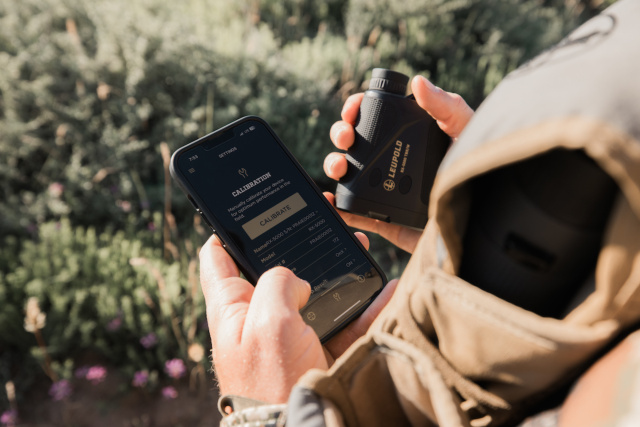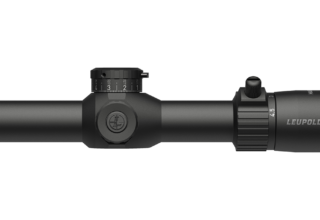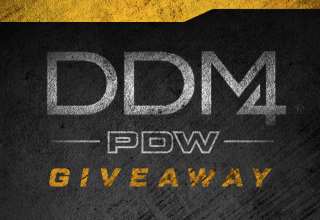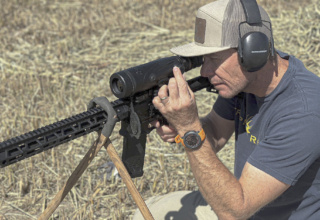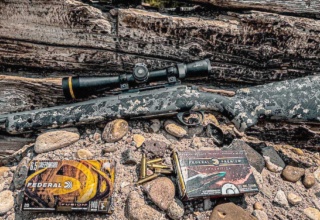Life-changing may be a strong statement, but shooters rely on their glass in the field and at the range. When you can mount your favorite binos to a tripod and glass cleanly with both eyes open, the experience is life-changing.
by Jace Bauserman
I’m never afraid to admit my shortcomings, especially if it helps another shooter, hunter, or outdoor person.
I was sure the purpose of a spotting scope was to locate big game animals, and for several seasons, that’s how I used my spotter. I would tote a big piece of quality glass to the field, set it up on a tripod, set the tripod at a comfortable glassing height, zoom in, and start scanning. Yikes! I thought the more the magnification, the better my chances of finding animals.
Of course, I found critters, and when I did locate them, I could often quickly depict antler size and the like, but honestly, I expected my “big” glass to see a lot more hide and bone.
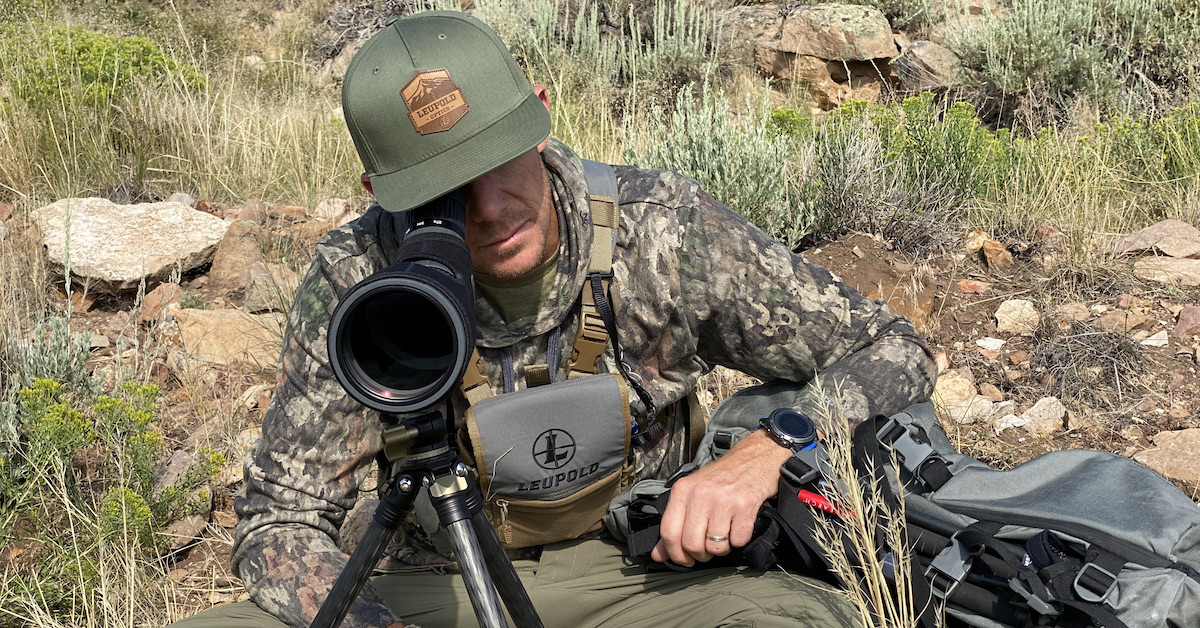
What was my problem?
I was doing things backward. You don’t start your search-for-game glassing missions with a spotting scope; instead, you begin with a quality pair of 12x or 15x binos. Dual eyepieces increase your field of view, and because you’re not overly zoomed on the terrain, you can develop and stick to a grid pattern in which you dissect pieces of the landscape from left to right. I promise you, until you use binos mounted to a tripod to search for game, you’ll continue to miss animals because you’re too zoomed in, fighting heat refraction, and don’t have a great field of view.
It was a good buddy that taught me the glassing game, and when I first started the initial search process with my Leupold binos, I balanced them on a pair of Primos Trigger Sticks. It was effective, and I was amazed at how much more game I was turning up. Then, once an animal was spotted, I switched to the spotting scope for further evaluation. It was a great system, and I quickly found three times the number of animals using my binoculars.
My only issue was I could never get the binos dead steady, and there was always a little shake. I’d seen and read about binocular adapters but didn’t want to drop any greenbacks on them. I figured my system was good enough. As is usually the case, I was dead wrong.
My first experience looking through a pair of 15s mounted to a tripod was during my quest for a Colorado bighorn. The bino adapter was a game-changer. In seconds, my hunting partner could slap on his 15s and smoothly scan distant hillsides. When he spotted an animal or object that required more magnification, he could instantly lock down the binos to ensure they didn’t move an inch, and then the spotter would come out. During that trip, his system became my system.
Enter Leupold’s Quick Stem and Field Clamp Binocular Tripod Adapters. I knew I needed a bino adapter, and these two seemed to be a great option. I wanted to test both, as each had a unique attach-to-the-bino system, and I was eager to see which one I would prefer.
The Quick-Stem mount requires the user to remove the logo-branded screw in the bridge of the binos. Next, press the gold button on the stem system to release the adapter screw and thread the adapter screw into the bino bridge. Reinsert the adapter screw and lock the stem mount with the top (gold) locking knob.
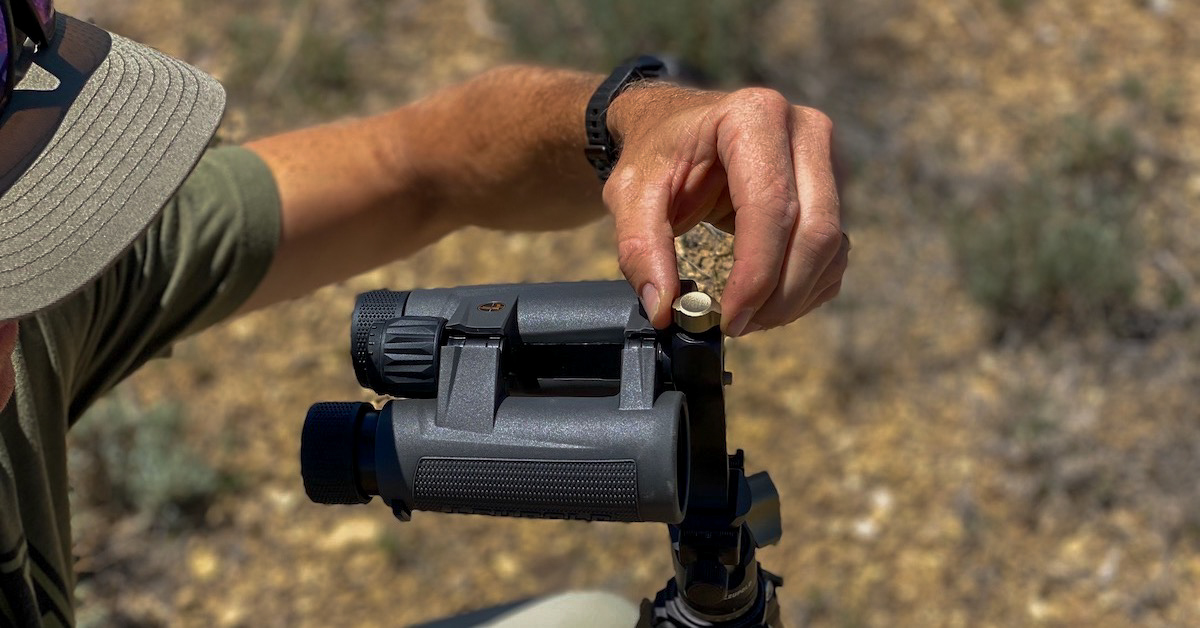
The Quick-Stem mount is lightweight, durable, and highly effective. It takes up little room in the pack, and it has been my go-to on off-the-beaten-path hunts; and often, I leave the threaded adapter in the front of the bino bridge so I don’t have to constantly remove the logo-branded set screw that comes in the bridge of most bino systems. Glassing is all about efficiency, and this bino adapter system proved quick, durable, and uber-effective.
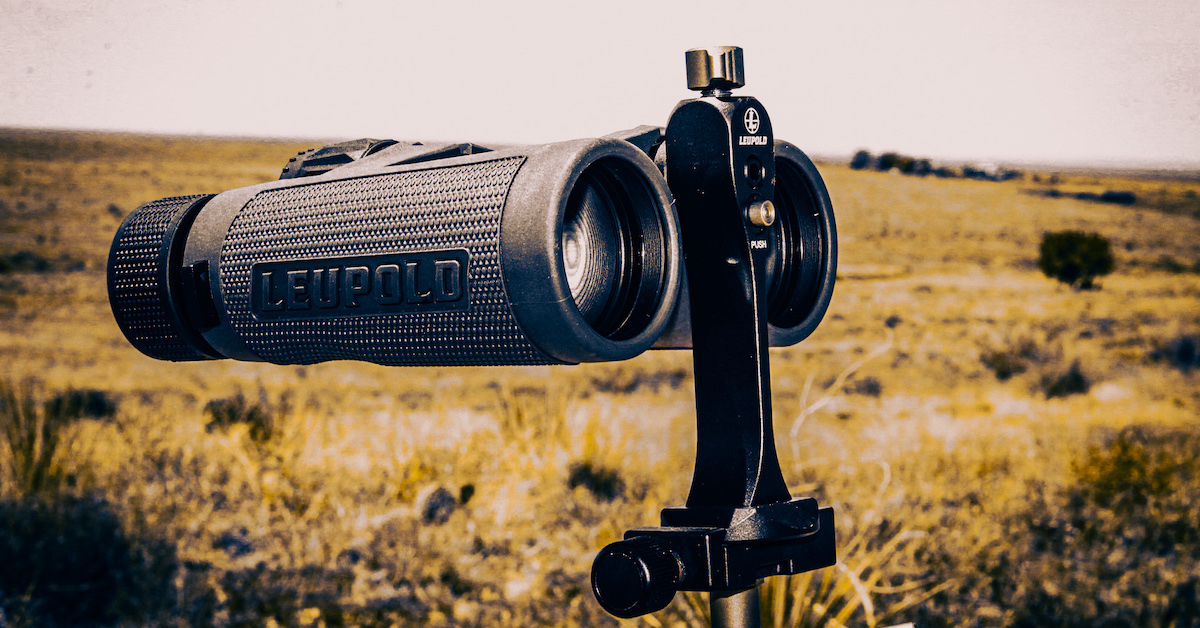
The Field Clamp Binocular Tripod Adapter, at 7 ounces, weighs a tad more than the Quick-Stem and takes up more room in the pack. For this reason, I like this system for close-to-the-truck glassing missions and while at the shooting range.
The Field Clamp is fitted with a pair of non-marring rubber pads that clamp down around one binocular tube, and a large gold knob sets tension. These things are like the jaws of life; they open and close slowly and smoothly, and there is no slop. The system is easy and effective, and the pads fit any binocular 20-56mm in diameter.

I mentioned using the field clamp at the shooting range, and I wanted to touch on that more. I realize spotting scopes are a range favorite. After all, you’re not searching for animals at the range. You’re often locked on a spot on a target, ready to see where the shooter hits; however, I’ve found a pair of quality binos mounted to a stable tripod are excellent for calling wind impacts with both eyes open. In addition, binos are easier to tote to the range in a top-notch range bag like 5.11 Tactical’s Range Ready Trainer Bag 50L. On most days, unless I’m sending lead over 500 yards, I tote a pair of 12x binos, the Field Clamp, and Leupold’s Alpine CF-425 Tripod Kit. This is a perfect ready-for-the-range system.
Both bino adapters will mount flawlessly to most any tripod, and I’ve yet to experience a single issue with either mounting system.

Do yourself a favor and get a bino-mount adapter. Don’t be hardheaded like me and convince yourself you don’t need one. If you’re a serious hunter or shooter, you’ll use them constantly.
Leupold Quick-Stem Binocular Tripod Adapter Specifications:
- Material: Aluminum
- Plate Compatibility: Arca-Swiss
- Length: 1.49 in.
- Width: 1.49 in.
- Height: 4.5 in.
- Weight: 2.8 oz.
Leupold Field Clamp Binocular Tripod Adapter Specifications:
- Material: Aluminum
- Plate Compatibility: Arca-Swiss
- Length: 4.48 in.
- Width: 1.49 in.
- Height: 3.07 in.
- Weight: 7 oz.

